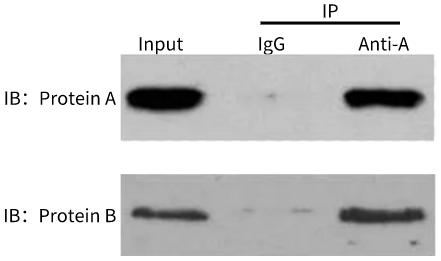- Cart 0
- English
Immunoprecipitation Experiment: Basic Edition
December 31, 2024
Clicks:1634
What is Co-IP?
Co-IP, short for Co-Immunoprecipitation, is a classic method based on the specificity of antibody-antigen recognition, used to study protein-protein interactions.
To put it simply, suppose we need to investigate whether there is any interaction between protein A and protein B in a sample. First, we process the sample through appropriate methods to extract the proteins (without disrupting the interactions between proteins), and then use A protein antibodies that have been bound to agarose beads or magnetic beads to capture A protein from the sample. Consequently, protein B, which is bound to protein A, can also be precipitated together. After that, the proteins are eluted from the beads, and protein B is detected. If detectable, it indicates that protein B was pulled down along with protein A during the precipitation process, thereby proving the interaction between the two.

How to do?

A few tips:

Terminology:
IB: Full name immunoblotting, also known as Western Blotting, is used to display the target protein.
IP: Full name immunoprecipitation, which is mainly for the purification and enrichment of the target protein.
Input: The whole cell lysate contains all the proteins within the cell and can be considered as the positive control. It is the cell lysate obtained after processing the sample. Before conducting the IP experiment, it is necessary to run WB to confirm that the sample contains protein A and protein B.
Anti-A: The antibody for the immunoprecipitation of protein A
IgG: The isotype control antibody for Anti-A, which is the same source and isotype as Anti-A. For example, if Anti-A is a rabbit source IgG type, then the isotype control antibody should be chosen as Rabbit IgG.
Result interpretation:
This result is to verify whether protein A and protein B interact with each other. The experiment is divided into two major groups: the Input group and the IP group, with the IP group further divided into the IgG group (negative control group) and the experimental group. WB is used to verify the presence of protein A and B in each group. From the bands in the Input group, we can conclude that both protein A and protein B exist, proving that there are no issues with the protein extraction steps. The negative control IgG group and the experimental group perform the immunoprecipitation experiment in parallel, and there are no bands for protein A and protein B, indicating that the IgG antibody did not precipitate proteins A and B, proving that proteins A and B do not bind to IgG, excluding the possibility of non-specific binding between the protein and the antibody; the experimental group has bands for both protein A and protein B, indicating that the immunoprecipitation experiment using the antibody of protein A successfully precipitated protein A, and at the same time, protein B was also precipitated, thereby concluding that there is an interaction between protein A and protein B.
Technically, the 50T of the kit represents the ability to complete 50 immunoprecipitation reactions, and the actual number of Co-IP experiments that can be completed is determined by the design plan, which generally requires at least three groups: negative control, positive control, and experimental group.
The purpose of this step is to remove proteins in the sample that can non-specifically bind to protein A/G agarose beads, reducing interference. It is not mandatory, and if there are many non-specific bands found in the CoIP experiment, it can be considered; however, it should be noted that choosing this step will consume agarose beads, and the number of subsequent immunoprecipitations that can be performed will also be reduced.
First, it is necessary to exclude the interference bands caused by IgG and the subsequent WB primary antibody of the same species (around 25kd and 50kd); then it is recommended to perform a pre-clearing experiment to exclude non-specific binding of Protein A/G; also, consider trying other brands of IgG if there are issues with IgG.
※ How to exclude false positive results?
False positive results need to be excluded by setting corresponding negative control groups. For example, if the experimental group is agarose beads + antibody X + target protein X + antibody Y + target protein Y:
|
Causes of potential false positive results |
Control group settings |
|
Agarose beads non-specifically bind to protein X |
Agarose beads + antibody X + antibody Y |
|
Agarose beads non-specifically bind to protein Y |
Agarose beads + protein Y |
|
Antibody X non-specifically binds to target protein Y |
Agarose beads + antibody X + protein Y |
|
Non-specific binding of antibodies |
IgG + protein X + protein Y |
※ If the final experimental result is negative, can it be concluded that there is no interaction between the two proteins?
For endogenous Co-IP experiments, a negative result does not necessarily indicate no interaction, as it could also be due to low expression of proteins within the cell. Therefore, it is recommended to first perform overexpression Co-IP as a control.
|
Item NO. |
Product Name |
Specification |
|
Immunoprecipitation (IP/CoIP) Kit |
50T |
Absin provides antibodies, proteins, ELISA kits, cell culture, detection kits, and other research reagents. If you have any product needs, please contact us.
|
Absin Bioscience Inc. |
 Follow us on Facebook: Absin Bio Follow us on Facebook: Absin Bio |
